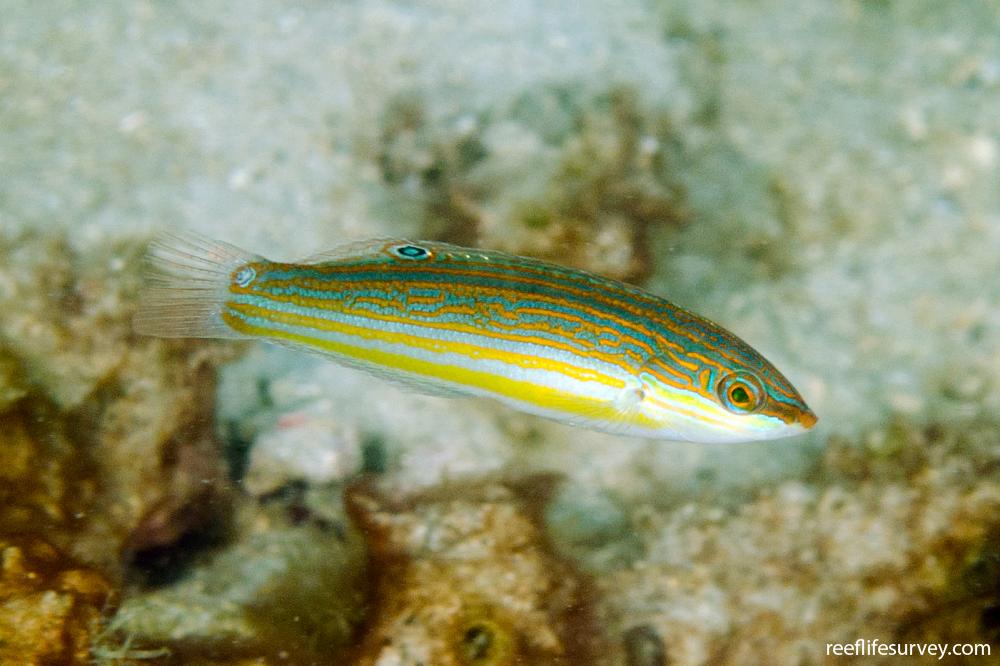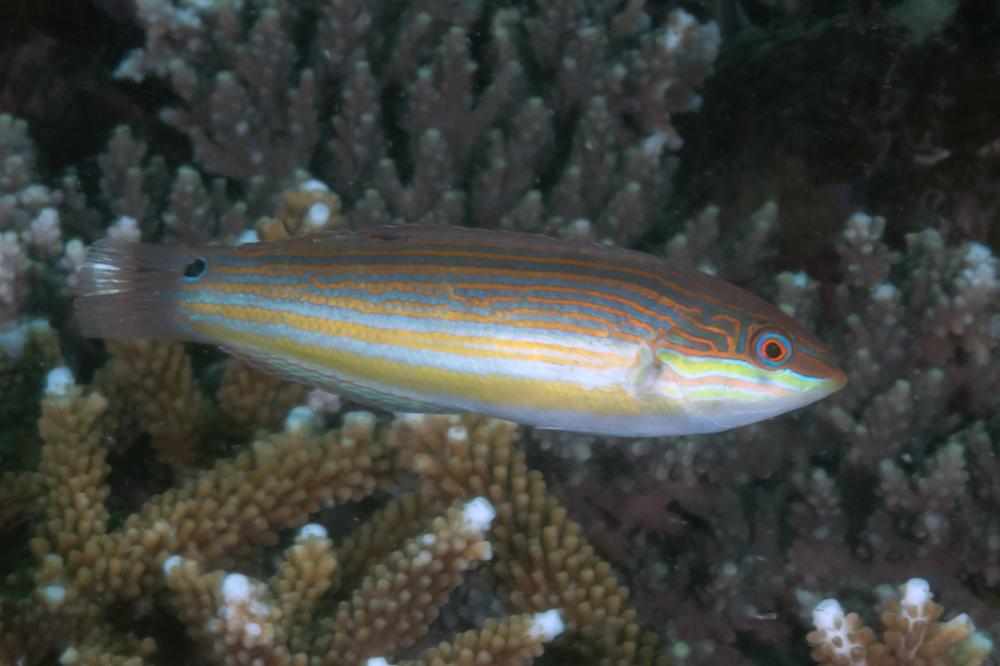Coris aurilineata
Goldlined Wrasse | Goldlined Coris | Yellow-lined Coris | Yellow-lined Rainbow-wrasseSimilar Species
Same Genus
Distribution
Localised
Description
Thin yellow and blue/green stripes along body, more distinct and deeper coloured above mid line. Males with indistinct bars on upper body caused by breaks in yellow stripes; small females and juveniles with white spots on mid line instead of bars. Juveniles with an ocellus about 2/3 the way along the dorsal fin and a 2nd small ocellus on the upper tail base. Pale underside distinguishes this species from similar Halichoeres species. Endemic to eastern Australia.
Information
Max Size: 14 cm
Sea Temperature Range: 18.2-31.2°C
Depth: 3-10m
Habitat Generalization Index: N/A
Also referred to as the SGI (Species Generalisation Index), this describes the habitat niche breadth of the species. Species with values less than 15 are found in a relatively narrow range of reef habitat types (specialists), while those over 25 may be found on most hard substrates within their range (generalists). Learn more here.
Conservation and Rarity
IUCN Status: Least Concern
Occurrence: Frequent (12.1% of sites)
Occurrence describes how often the species is found on surveys within its distribution. It is calculated as the % of reef sites surveyed by RLS divers across all the ecoregions in which the species has been observed
Abundance: Few (5 per transect)
Abundance is calculated as the average number of individuals recorded per RLS transect, where present.
Edit by: Joe Shields





























